The Technirama studio camera.
Many of these units were manufactured as far back as the mid 1930's, having seen
service in the production of countless Technicolor films. Originally converted
to use Eastmancolor negative film in an 8-perforation horizontal format for use
in augmenting the available VistaVision cameras. The addition of the unique
Delrama anamorphic attachment was all that was required for use in
Technirama production. This camera is shown with the 2,000 foot coaxial film
magazine. For live sound recording, the camera must be encased in a bulky blimp.
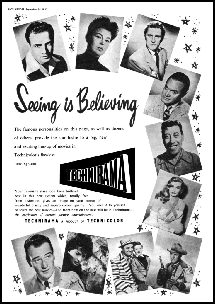
Click the picture to view a Sept. 1957 British ad for Technirama.
|
|
Technirama Delrama lens, The American WideScreen Museum Collection
Four views of the Delrama anamorphic attachment used in the production
of Technirama films. The housing contains two prisms mounted much like a periscope.
Like M-G-M Camera 65/Ultra Panavision 70, Technirama image clarity benefitted from
the fact that the compression is done with far simpler, though substantially bulkier,
optics than the typical cylindrical squeeze lens. The clarity and contrast of the
photographed image is comparable to spherical lenses. Focusing of the Delrama
is interlocked with the prime lens focus system by way of the toothed belt. As is the case with all anamorphic systems, "focus" actually is an astigmatism adjustment that removes all astigmatism at the plane of focus. If you are not familiar with the definition of astigmatism you should consult a dictionary, encyclopedia or other reference work.
This lens, assigned to Technirama camera DG9, was used in the production of Night Passage, The Big Country, The Music Man, Auntie Mame, and Spartacus.
 TECHNIRAMA DELRAMA FEATURES FOUR SPEED MANUAL TRANSMISSION. Well, sort of. A knob on the side of the lens is positioned for each prime lens that the camera was equipped with. This ensured that the focusing of each prime and the anamorphic adapter were synchronized. (Only three of the four positions are shown in the photo. Use your imagination.)
TECHNIRAMA DELRAMA FEATURES FOUR SPEED MANUAL TRANSMISSION. Well, sort of. A knob on the side of the lens is positioned for each prime lens that the camera was equipped with. This ensured that the focusing of each prime and the anamorphic adapter were synchronized. (Only three of the four positions are shown in the photo. Use your imagination.)
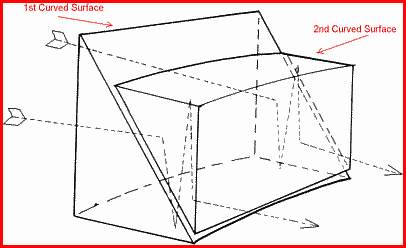
Delrama Camera Anamorphic
The Delrama family of anamorphic optics primarily consisted of projection attachments that used curved mirrors. For camera optics, the Delrama used anamorphic prisms in order to reduce size, though at the expense of an increase in weight. Seen above is an Old Delft diagram showing how the Technirama Delrama functioned. Delft used prism optics in its 8mm and 16mm amateur anamorphic lenses. Your Curator found the above diagram a bit hard to understand so he dismantled a real one and found it even harder to figure out, but no where near as hard as figuring how to put it back together.
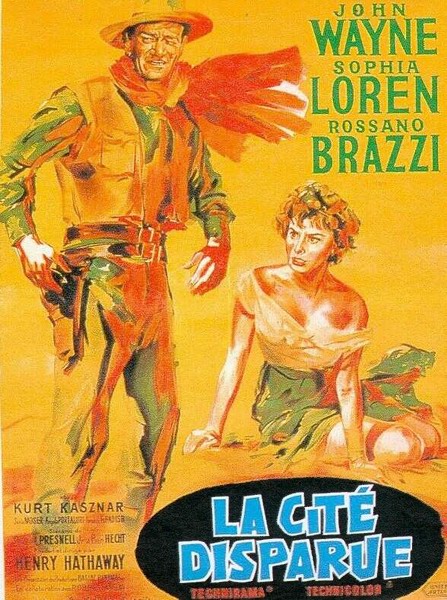 In 1957 in Africa, Henry Hathaway, working from a script by Ben Hecht, and a stellar cast assembled an almost totally rotten film, Legend of the Lost that only had Jack Cardiff's typically gorgeous Technirama-Technicolor photography going for it.
In 1957 in Africa, Henry Hathaway, working from a script by Ben Hecht, and a stellar cast assembled an almost totally rotten film, Legend of the Lost that only had Jack Cardiff's typically gorgeous Technirama-Technicolor photography going for it.
| Sample frames from Legend of the Lost |
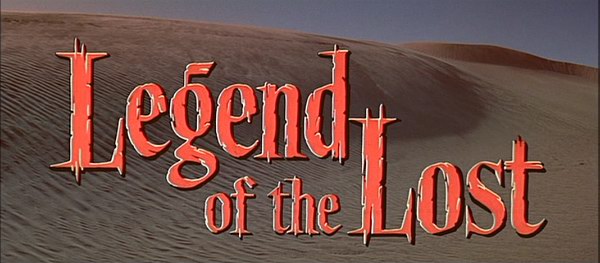 |
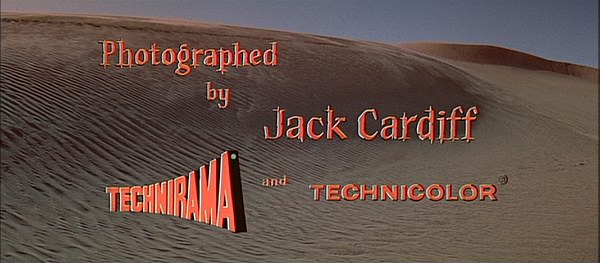 |
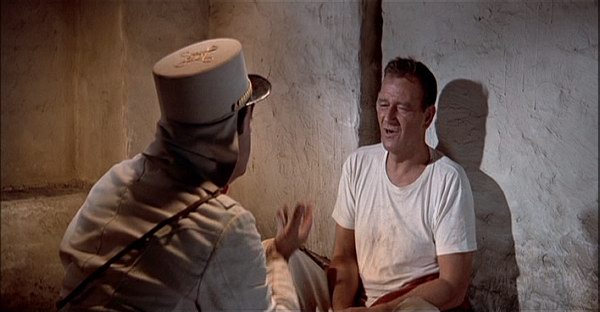 |
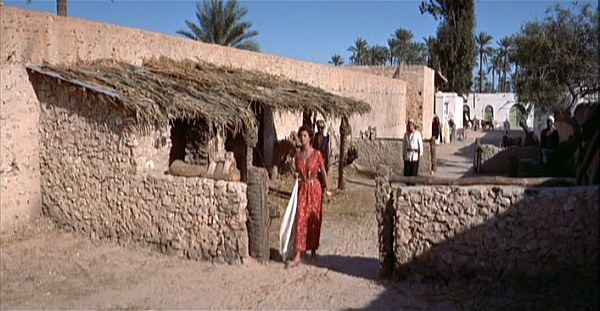 |
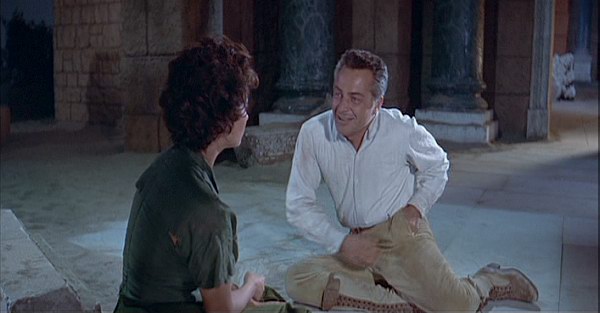 |
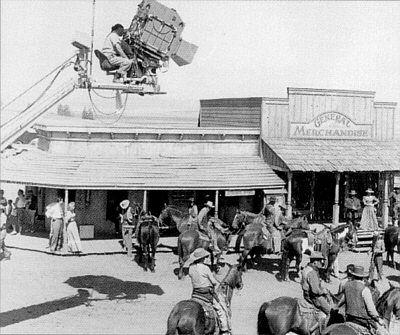
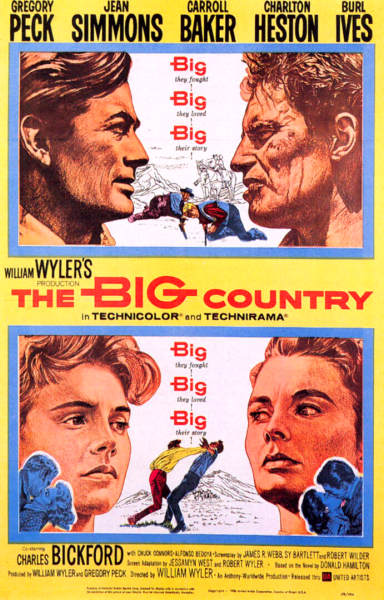
Poster courtesy of the Setnik Collection
Technirama filming The Big Country (1958). The camera is seen in the sound blimp used for live sound recording with the 2,000 foot co-axial magazines, as seen in the color photo at the top of the page. Director of Photography: Franz Planer, ASC, who gave the image a slightly desaturated look that conveyed the parched countryside in this film about a feud over water rights. Seen above right, one of many posters for the film. Charlton Heston looked a whole lot better in the picture than he did in this artwork. Despite his fourth billing, he, Burl Ives (who won an Oscar), and Chuck Connors dominated the film. A testament to William Wyler, justifiably known as the best director of performance that the screen has ever seen. Also dominating the film is the outstanding music by Jerome Moross, who gave us possibly the best score ever written for a western.
The Big Country is now available on Blu-ray from a very good looking transfer. There may be a very slight error in the anamorphic decompression but it's visible only to the most keen eyed viewer. Hopes for hearing a stereophonic soundtrack remain unanswered. It's probably never going to happen.
Old Dog, New House
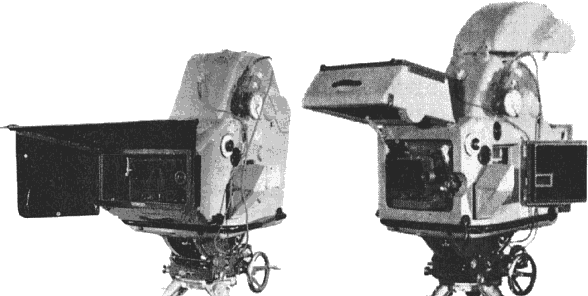
Photos courtesy of Giovanni Abrate
The noisy old 3-strip
converted cameras had always used ice box sized and shaped sound blimps that
were as old as the cameras themselves. In the early 1960's smaller, lighter,
and more accessible blimps were developed and used extensively in Europe.
We've never seen any photos of these blimps in use on a U.S. camera. They
certainly must have made life easier for camera assistants and loaders.
Higher quality photos of the European Technirama rig can be seen on page 7.
You are on Page 2 of 






